Honor Launches The View20: A 48MP Camera Review
by Andrei Frumusanu on January 28, 2019 8:00 AM EST- Posted in
- Smartphones
- Mobile
- Kirin 980
- Honor View20
GPU Performance
GPU performance of the View20 is actually one of the things that should actually differ from what we’ve seen in the Mate 20’s: the explanation here is related to the fact that the View20 promises a much improved SoC thermal dissipation solution in the form of a heat pipe system, while the Mate 20’s did not employ any such dedicated solution.
For GPU and gaming performance, sustained performance is the key measurement metric as over the last few years we’ve seen devices vary a lot between their peak performance figures and their longer term thermally constrained figures.
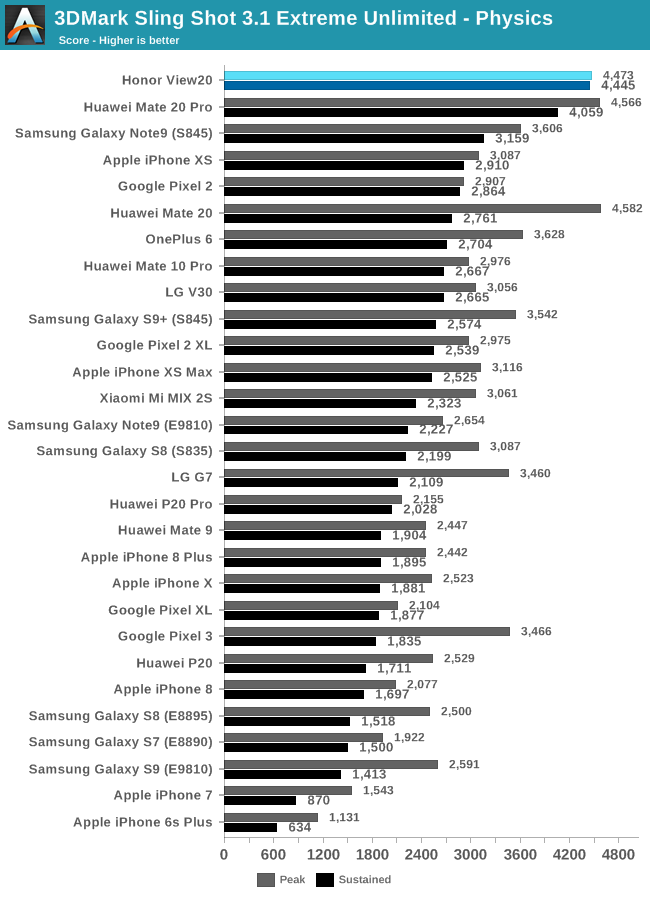
Starting off with 3DMark’s physics test, the View20 actually ends up as the top performing device tested so far. Here its thermal dissipation solution as well as thermal throttling settings do allow the phone to post near its peak performance even though the phone had reached its peak thermal temperature and thermal envelope equilibrium after more than 30 minutes of load.
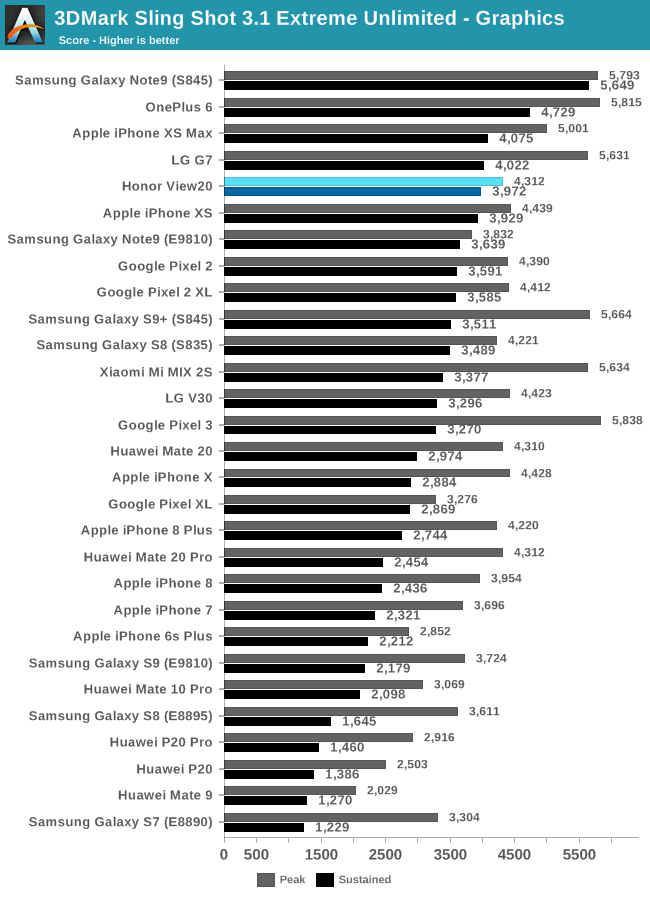
The graphics subtest also fares well for the View20. Although it again shows very good sustained performance figures near its peak, the Mali G76MP10 GPU in this case still lags a bit behind Qualcomm and Apple’s solutions.
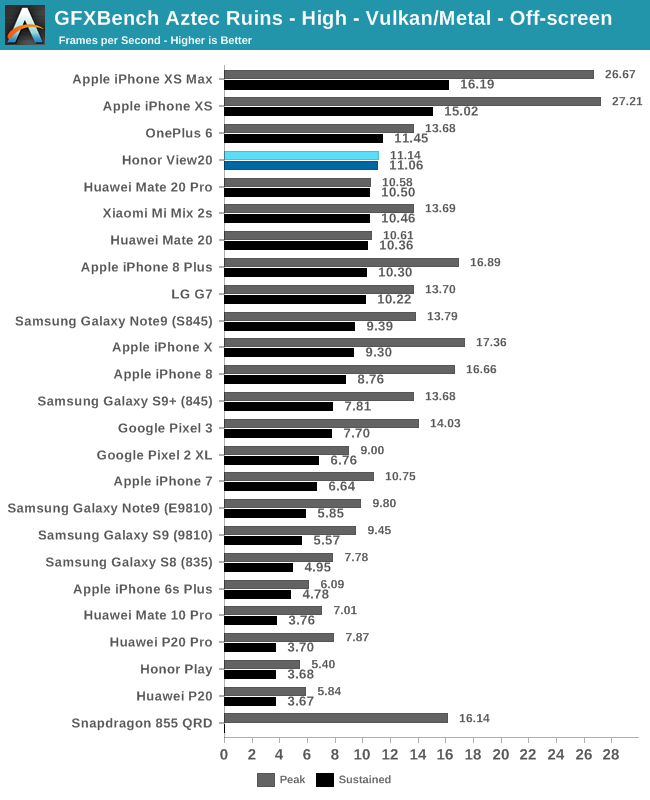
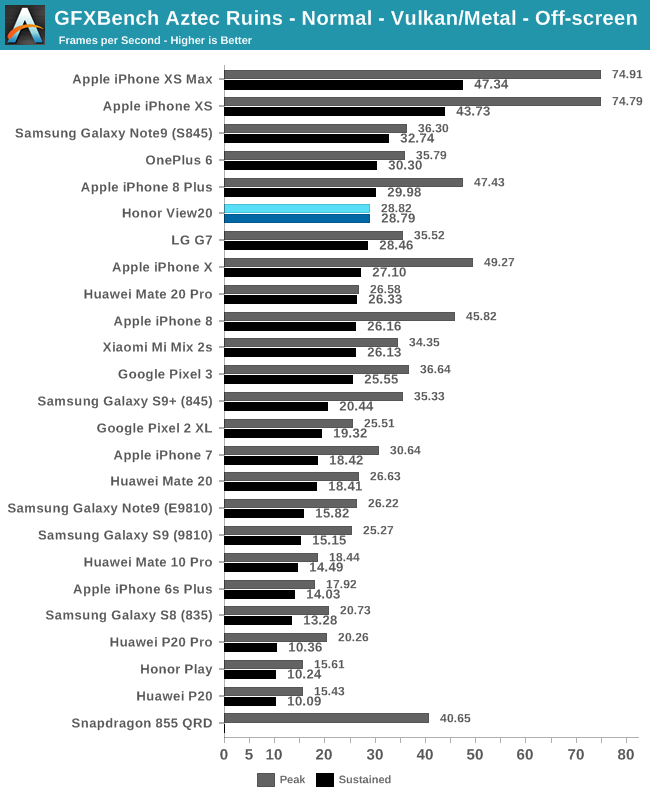
In both GFXBench Aztec benchmarks, the View20’s sustained performance is again exemplary, showing no throttling even after long periods, but as before the absolute performance still is a bit behind Qualcomm and Apple’s best.
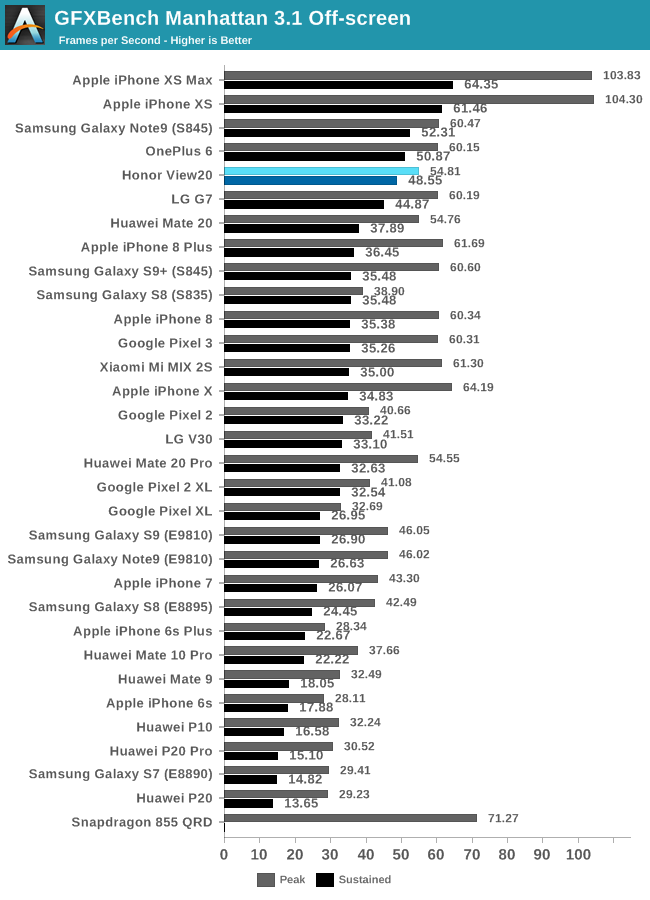
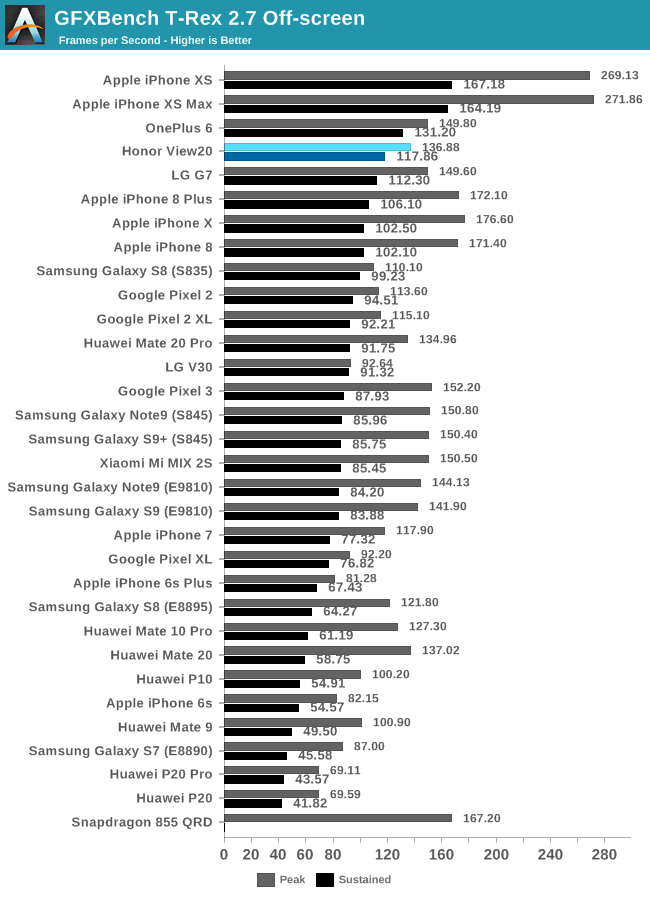
Finally, in the by now a bit more legacy GFXBench tests, we again see the View20 beat the sustained performance offered by the Mate 20 and Mate 20 Pro with the same Kirin 980 chipset.
Overall, the View20’s gaming performance looks to be quite good – its peak performance isn’t quite up to par with the latest generation chipsets, however its sustained performance is quite excellent due to the what looks to be Honor’s new heatpipe SoC thermal dissipation solution. The end-performance ends up around between some of the better Snapdragon 845 devices we’ve seen in 2018 – which is actually a good place to end up in given Kirin SoC’s rather disappointing showings in the last few generations.










37 Comments
View All Comments
apphil - Monday, January 28, 2019 - link
One thing I am extremely curious is the performance of the GPS chip as it is one of the first phones with L5 GPS and this should increase accuracy a lot. Can you guys comment on that or maybe test that, as better navigation and positioning would be a very interesting feature for me.Andrei Frumusanu - Monday, January 28, 2019 - link
One of the benefits of this was in more urban areas with tall buildings, unfortunately I wasn't able to actually test this out. The phone's location APIs also does not disclose whether it sees L5 satellites or not - usually you see it when there's a duplicate ID, however this does not appear on the View20.808Hilo - Monday, January 28, 2019 - link
The cam is disappointing. Can we just have a big sensor and a manual lensring of my choice and 4k or 8k raw at 30fs the back. NOW!!!Its not difficult. Just do it. Nikon in my case. I got a nice selection of 8-50mm lenses and dont want yours.
Engineering a phone is not difficult. Adding a lensring and a big sensor is a breeze.
Valantar - Monday, January 28, 2019 - link
Difficult? Not if you don't care about size, no. The flange distance of the Nikon Z-mount is 16mm, for their F-mount it's 46.5mm. Add a handful of mm to that for the display, and 10 or so for the sensor and shutter array - more if you want IS. That's a chunky phone, even with a Z-mount. And constructing lenses for shorter flange distances with large sensors is _extremely_ difficult, as you'll have to correct for ever more distortions towards the outer parts of the sensor. Of course they could have spacer rings or similar to adapt lenses, but that would kind of defeat the point, no? You wouldn't be able to fit it in your pocket unless you're wearing MC Hammer pants. Also, 8k30 in a phone? At what bitrate, 50Mbps? For any bitrate worth the pixels in 8k, you'd need storage in the several-hundred-GB amounts for even a collection of short clips, and the processing power needed would require large interchangeable batteries - unless you want your phone to die after filming for 5 minutes? And good luck getting that video material off a phone with non-removable storage in a reasonable amount of time. I suppose you'd want it to have an SSD bay too?hanselltc - Monday, January 28, 2019 - link
>Engineering a phone is not difficultbuild ur own phone m8 :v
Manch - Monday, January 28, 2019 - link
TOF sensor would be great for 3D scanning! Why not have an app to take advantage!jabber - Monday, January 28, 2019 - link
You know I'd settle for a truly excellent 8MP main cam to be honest.Forget going mega megapixel. Just get the fundamentals right first.
shabby - Monday, January 28, 2019 - link
Nothing to do with megapixels in this case, the sensor is great, everyone uses sony sensors, its the isp and software that sucks. The isp on these chinese made soc's is way behind the snapdragon isp.Heck even sony doesn't know how to fully take advantage of its own sensor. The pixel 3 and pocophone use the same sensor and we all know which phone takes the best photo's.
Midwayman - Monday, January 28, 2019 - link
Yes. This. Especially with more phones putting on more than a single lens. I care way more about the quality of the pixels than the quantity of pixels. 48mp photos just take up more space if they are just a grainy mess in anything but the brightest light.jabber - Tuesday, January 29, 2019 - link
Exactly. They spend all the time fussing over the sensor and then throw out the lens/flash/focusing/software/compression/NR features.I bet the sensors from 4 years ago would beat most current flagships if they bothered to spend more than a weeks development on all the other fundamentals.